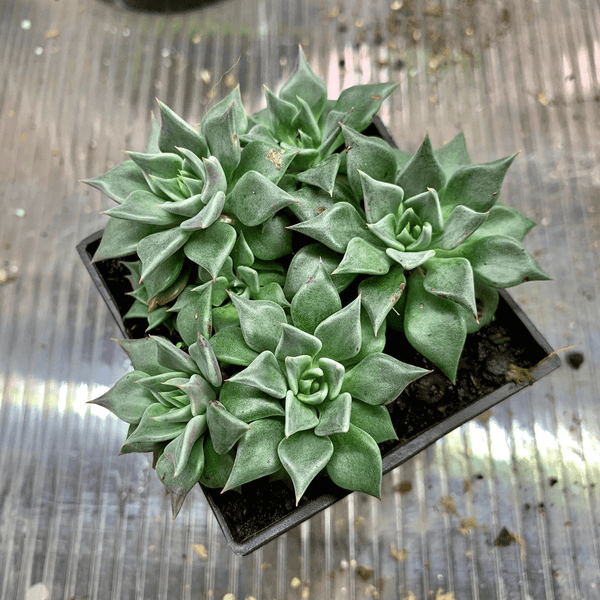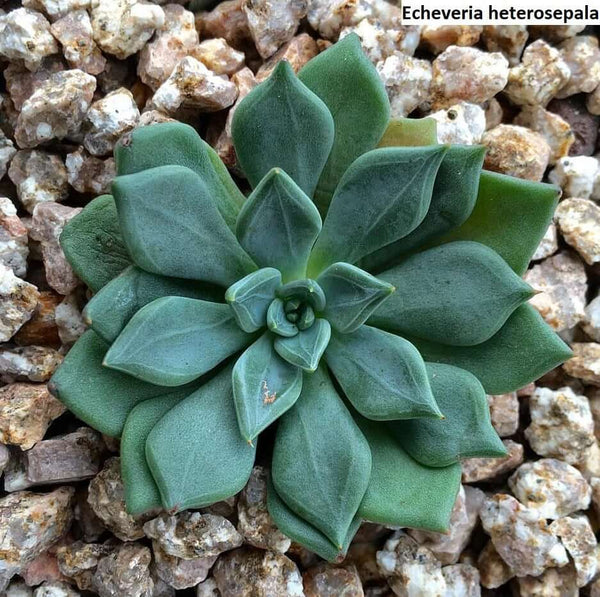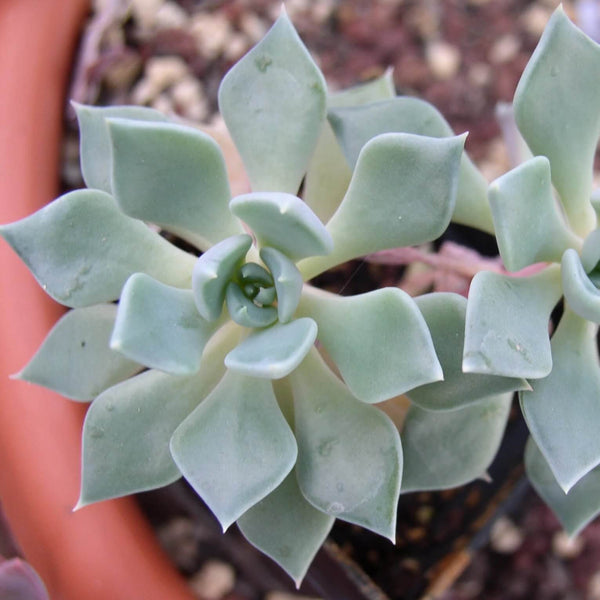Echeveria heterosepala - 20 seeds
Regular price
$7.99
Sale price
$9.99
Echeveria heterosepala is a succulent plant endemic to the Mexican states of Oaxaca, Puebla and Veracruz.
HOW TO GROW?
1. Sterilize substrate (3+ minutes in a microwave or 50 mins in an oven)
2. Planters should be about 1.5 inches deep. Fill a container with good draining soil. Good drainage is essential, 50% regular potting soil with 50% coarse sand, perlite, or pebbles (~0.15 inch)
3. Echeverias have tiny seeds that should not be covered with soil. They germinate best at 18-20 °C temperatures.
4. Equally, water the substrate with water - place a piece of a napkin on top of the substrate and slowly pour the water over it.
5. Let the container soak up water for 5 minutes. Leave the container to drain out the water surplus.
6. Spread the seeds over the substrate, leave some space between them.
7. Put the whole container into a zip bag to keep humidity
8. Avoid exposing them to direct sunlight, but provide them with light by putting them in some bright place.
9. The germination process usually starts within four days – 2 weeks
10. Start opening the container gradually so that the seedlings can get used to the new air conditions. Seedlings need some moisture, the substrate shouldn’t be dry, but don’t overwater. and they need an ample amount of light – but not direct sunlight
11. Repot them when you notice that seedlings are space-limited
12. Examine pots daily for fungus infection. Treat with fungicide if fungus appear
Light: Full sun. Perfect for a sunny window. Water: Water during the summer and spring, making sure drainage is immaculate. Reduce water in the winter to monthly. Temperature: Prefers average summer temps (65ºF/18ºC – 70ºF/21ºC). In winter, cool to 50ºF/10ºC. Soil: A well-drained succulent mix, with an ideal pH around 6.0 (slightly acidic). Fertilizer: Feed with a controlled-release fertilizer at the beginning of the season or weekly with a weak liquid solution. Use a balanced 20-20-20 fertilizer at 1/4 strength on mature plants and a fertilizer with less nitrogen on young plants. Most Echeveria can be easily propagated from leaf cuttings, although a few are better from seeds or stem cuttings.
HOW TO GROW?
1. Sterilize substrate (3+ minutes in a microwave or 50 mins in an oven)
2. Planters should be about 1.5 inches deep. Fill a container with good draining soil. Good drainage is essential, 50% regular potting soil with 50% coarse sand, perlite, or pebbles (~0.15 inch)
3. Echeverias have tiny seeds that should not be covered with soil. They germinate best at 18-20 °C temperatures.
4. Equally, water the substrate with water - place a piece of a napkin on top of the substrate and slowly pour the water over it.
5. Let the container soak up water for 5 minutes. Leave the container to drain out the water surplus.
6. Spread the seeds over the substrate, leave some space between them.
7. Put the whole container into a zip bag to keep humidity
8. Avoid exposing them to direct sunlight, but provide them with light by putting them in some bright place.
9. The germination process usually starts within four days – 2 weeks
10. Start opening the container gradually so that the seedlings can get used to the new air conditions. Seedlings need some moisture, the substrate shouldn’t be dry, but don’t overwater. and they need an ample amount of light – but not direct sunlight
11. Repot them when you notice that seedlings are space-limited
12. Examine pots daily for fungus infection. Treat with fungicide if fungus appear
Light: Full sun. Perfect for a sunny window. Water: Water during the summer and spring, making sure drainage is immaculate. Reduce water in the winter to monthly. Temperature: Prefers average summer temps (65ºF/18ºC – 70ºF/21ºC). In winter, cool to 50ºF/10ºC. Soil: A well-drained succulent mix, with an ideal pH around 6.0 (slightly acidic). Fertilizer: Feed with a controlled-release fertilizer at the beginning of the season or weekly with a weak liquid solution. Use a balanced 20-20-20 fertilizer at 1/4 strength on mature plants and a fertilizer with less nitrogen on young plants. Most Echeveria can be easily propagated from leaf cuttings, although a few are better from seeds or stem cuttings.






